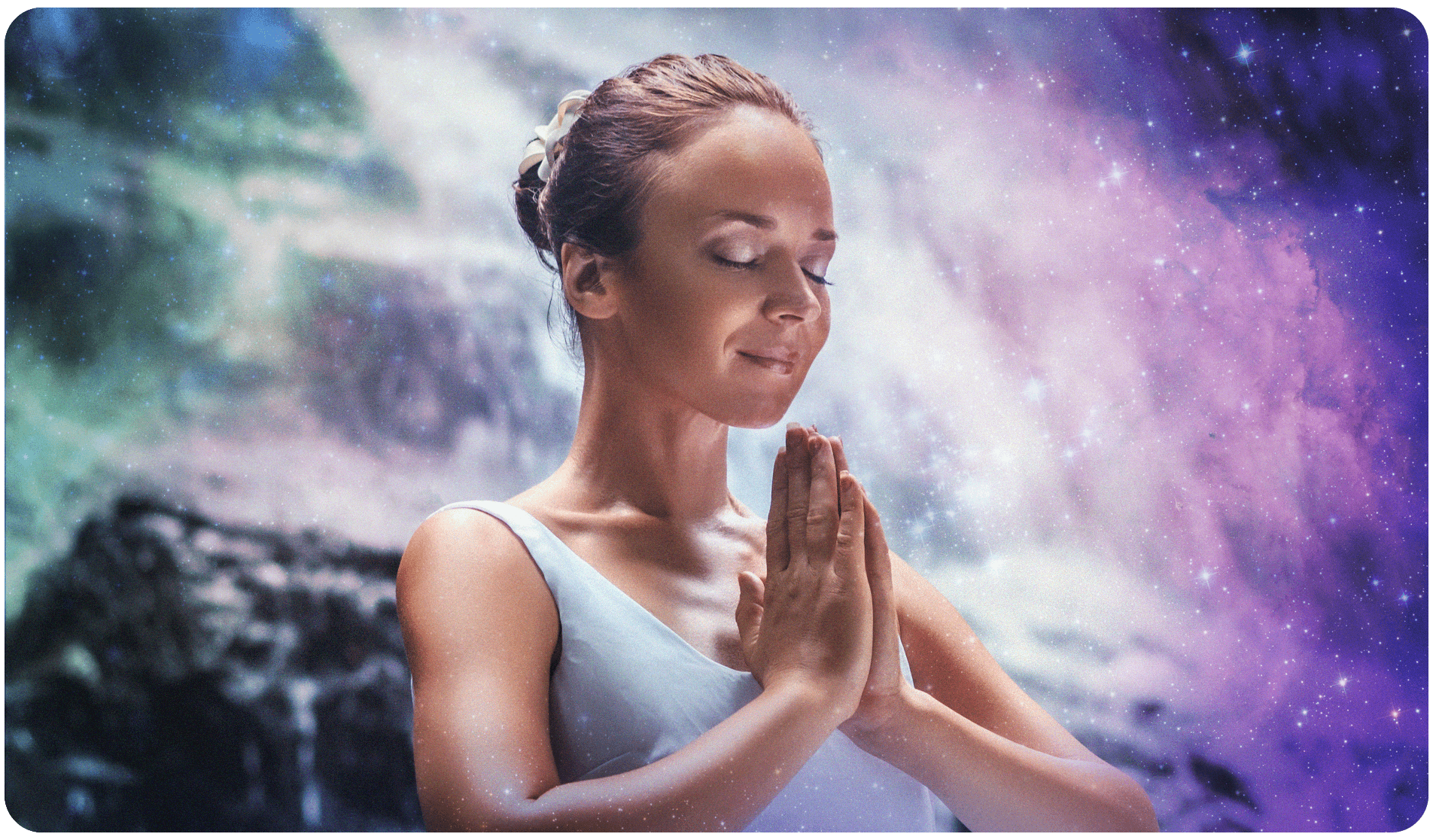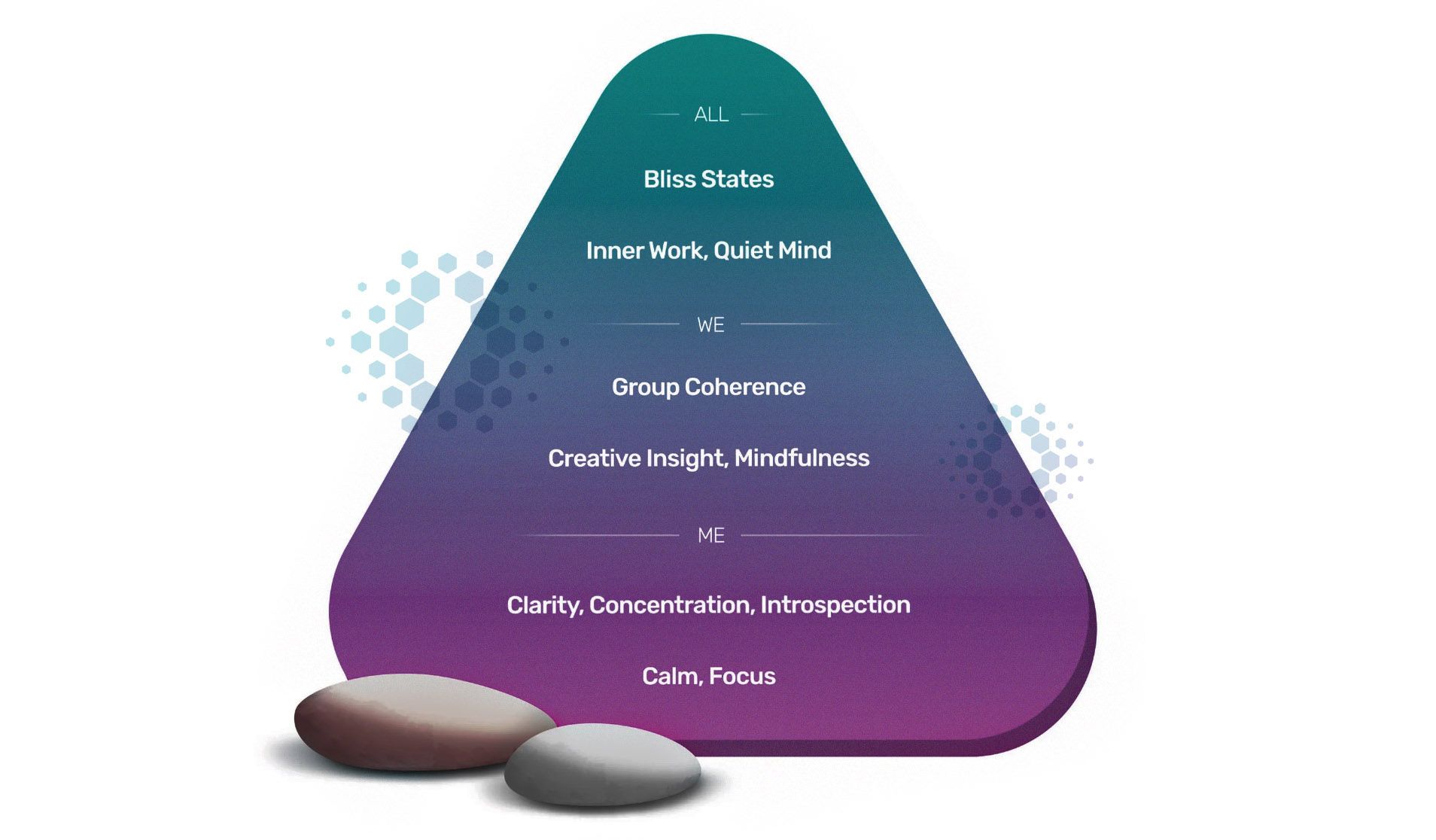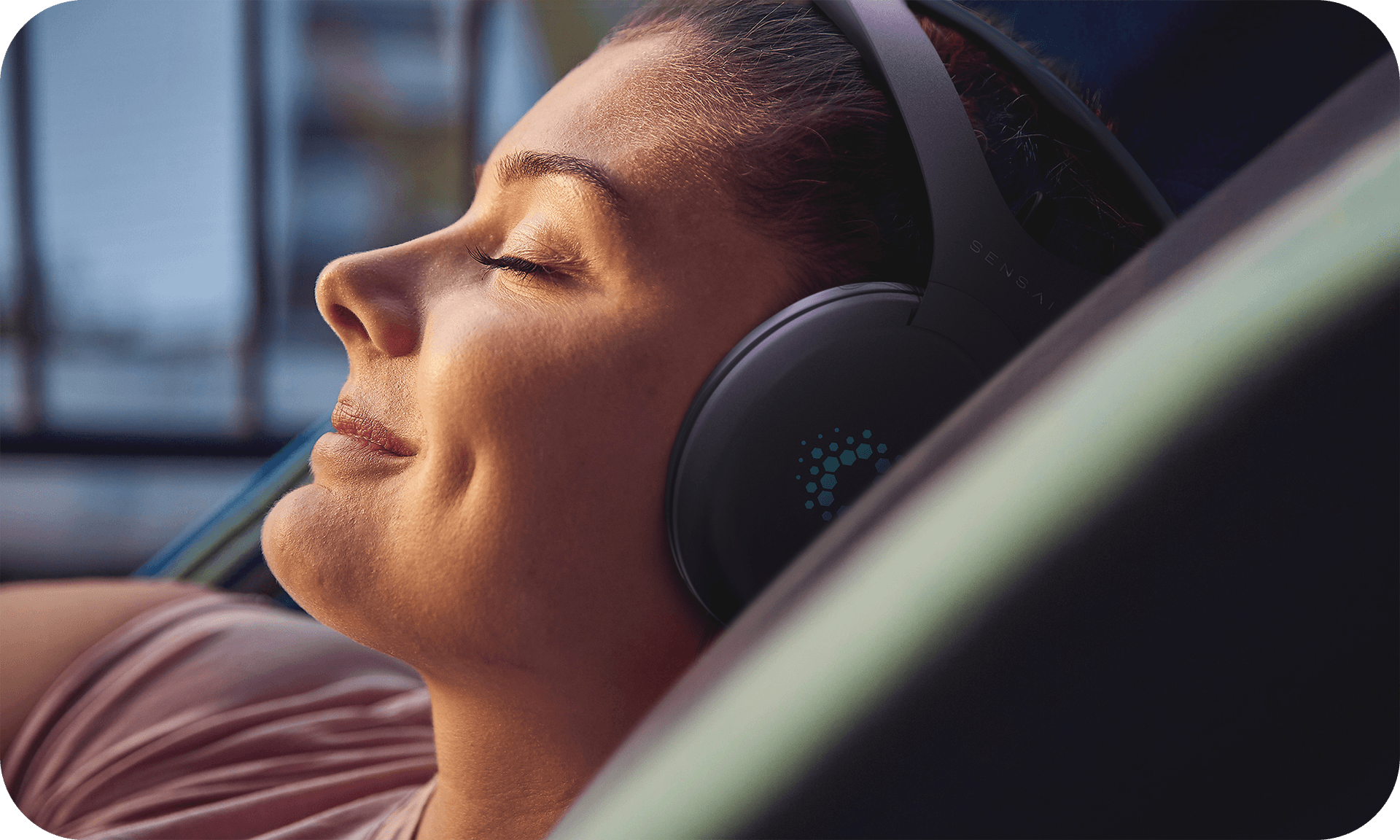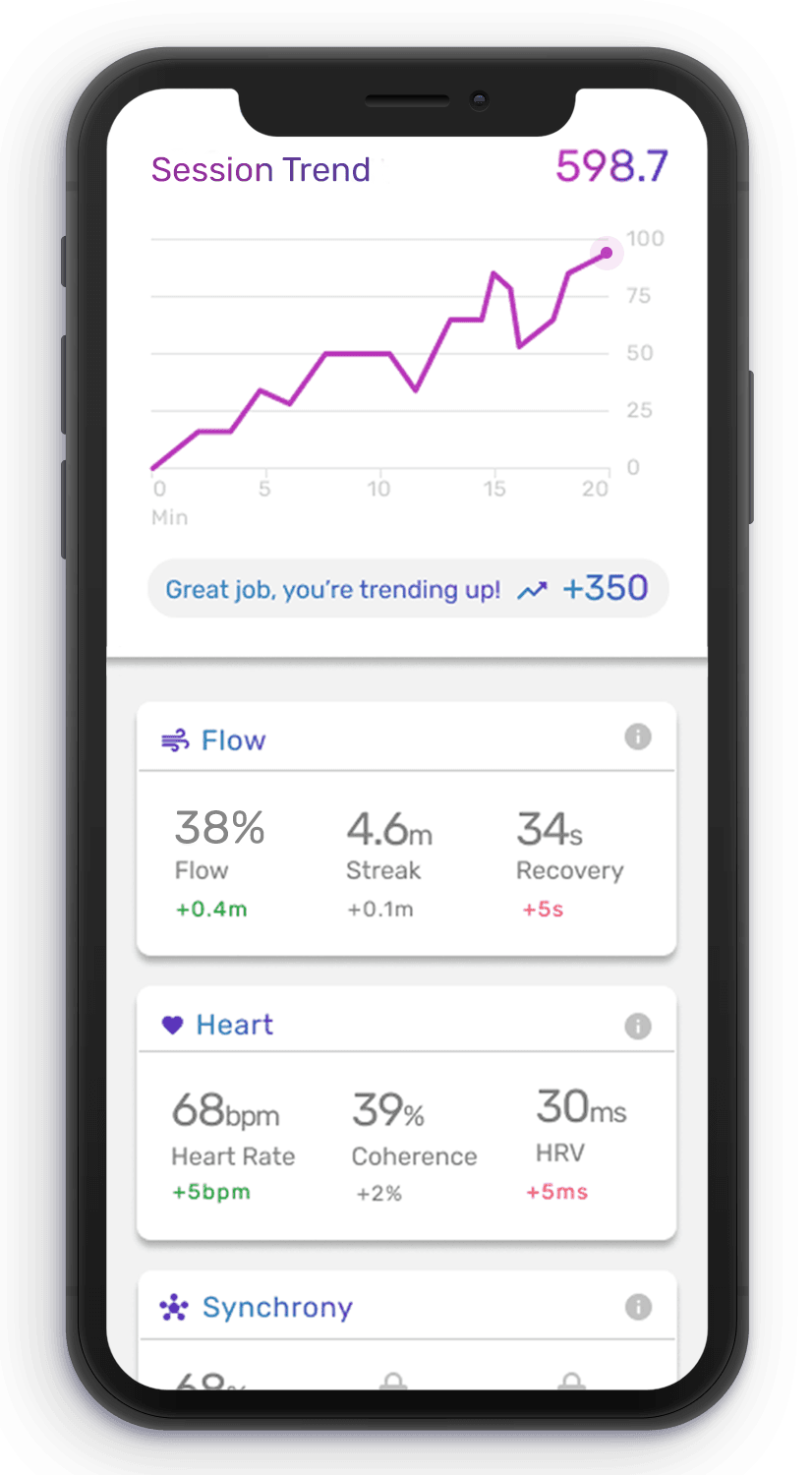MEDITATION
Am I Meditating Right?
Paola Telfer

Do You Meditate?
If so, you are in good company. An estimated 275 million people worldwide meditate regularly, primarily to reduce stress, support mental health, improve sleep, and enhance cognitive performance, especially focus and memory. Or perhaps you used to meditate and stopped (a not uncommon situation), or maybe you've been thinking about meditating but have yet to get started?

Regardless of your response, this article is going to be super valuable for you.
Here, I will provide insights on how to get started with meditation and harness Sens.ai to help you do so. If you already meditate, you will learn how to assess whether your meditation is working for you and how to use Sens.ai to accelerate your meditation training.
Understanding the Brain and Mind
Before we dive in, let's take a moment to understand the difference between the brain and mind. This distinction is crucial and can be a real eye-opener. The brain is not the mind. Most people think the brain and mind are the same, but they aren’t. They are separate, yet inseparable. Your brain is a highly responsive physical organ made up of neurons and supporting tissues, all intricately connected to process and transmit information, regulate bodily functions, and enable complex behaviors and cognitive abilities. Its core function is to help you survive and thrive.
The mind, on the other hand, is a process that emerges from the flow of information and energy within your brain/body and between you and your environment. Its core function is to monitor and regulate your conscious experience. You can think of the mind as the piano player and the brain as the piano. The music that arises from the piano is determined by how tuned the piano (functioning, health and activity of the brain) is and how well it is played (the skill with which you use your mind). With this understanding, it's much easier to grasp what meditation is!
What is Meditation?
Meditation is a collection of training methods that teach you how to use your mind to change your brain. This, in turn, transforms your conscious experience, including your feelings, decisions, behaviors—everything. Meditation, especially when supported by neurofeedback, enables you to create the music you desire by becoming a proficient player of the piano—your brain. The more skilled you become, the greater your capacity to create the life experience you want. When your life and life experience are not what you want, you can change the music by using your mind to change your brain.
This is what meditation teaches us.

Which Meditation is Right for Me?
I recommend most people start with concentration-focused meditation. The best meditation objects are often the simplest—focus on the breath, body scans, and the 'space between the breath or between body parts' are suitable objects of focus.
As you develop sustained concentration, you can add 'noting' methods. Noting is a form of mindfulness meditation; an example of noting is observing each moment of seeing, hearing, and feeling with emotional neutrality. Compassion is a great first non-conceptual object of concentration.
As you move into developing effortless concentration, consider objects of meditation like Letting Go, Forgiveness, and Gratitude. Deep insights can be gained, and this is where rewiring for happiness can occur.
Then, while developing blissful and single-pointed concentration, incorporate objects of meditation like Open Monitoring (just being present with whatever arises), Limitless Potentiality (Emptiness), and Unprovoked Happiness (Bliss).
Sens.ai includes versions of each of these powerful meditations.
How Do I Know if I Am Meditating Right?
Experienced meditators often focus on maintaining the right posture and meditating daily for long enough. However, two even more important factors are clarity about WHY you are meditating and WHAT outcome you want to experience. Success is therefore measured by embodying the outcomes you are training for.
At the core of many meditation methods is learning how to monitor and regulate the mind in ways that enhance well-being, insight, and connection.
If in daily life you are becoming happier, more relaxed, focused, and caring, then your meditation is working! Skilled meditators are healthy, happy people who have learned how to flexibly use their mind to access different brain states.

Demystifying Meditation
Each focus of meditation, such as compassion, resonates at unique frequencies and harmonizes with specific brain training programs in the Sens.ai App. This mapping has been developed over the last several decades by pioneers like Rael Cahn, Anna Wise, and Jay Gunkelman. Check out the studies on meditation to brainwave mapping at the bottom of our Science page. Our App provides guidance to help you choose meditations to optimize your experience.
People sometimes confuse mindfulness and meditation. Mindfulness is at the heart of meditation; it’s a way of being present and aware, non-judgmentally in the moment. We meditate from mindfulness. This present moment awareness keeps the meditator alert to a loss of vividness in their perception of the meditation object. Mindfulness is its own training program in our App.

Sens.ai — Your Meditation Coach
The Sens.ai neurofeedback system provides real-time feedback on the impact of your activities on your brainwaves. It tells you when you are, and aren’t, in the meditation training zone you aspire to be in. This can accelerate your meditation training considerably.
Sens.ai also provides many insightful metrics that will help you track and monitor your progress. These include:
Streaks: The longest continuous duration you were able to stay focused.
Zone: The combined sum of all your streaks in a given 20-minute session.
Power: The strength of your focused brainwave signals.
Synchrony: The harmony of your brainwave signals between different parts of your brain.
Coherence: The consistency of your heart rhythm.
You can learn more about these metrics and more HERE.
With this data and by tracking your experience, you can start to get a real sense of how you are developing as a meditator.
The Stages of the Meditation Path and Common Markers
As you read through the following markers, reflect on which of these relate to your experience. Avoid feeding these insights to your inner critic. Self-kindness is a central tenet of meditation!

1. Developing Continuous Concentration
- Resistance to practice
- Falling asleep
- Daydreaming
2. Developing Sustained Concentration
- Increasing concentration streaks from seconds to minutes
- Feeling a “brightening” of awareness—being both the observer and the observed thinker
3. Developing Effortless Concentration
- Immediate and lasting concentration during sessions
- Concentration streaks measured in minutes, mind-wandering in seconds
- Time in the concentration zone noticeably greater than 50% of a session
4. Developing Blissful and Single-Pointed Concentration
- Holding a non-conceptual meditation object
- Self-talk/self-narrative disappear
- Mind shifts effortlessly from object to object without losing quality in awareness or concentration
- No physical discomfort during sessions
- Sessions can become longer with ease
Concentration state persists out of session, coloring life with equanimity and bliss
This path is not linear; you will get glimpses of other states before they become persistent. Proceed at a pace that feels good for you.
Meditation is for Everyone
Meditation is no longer solely in the domain of spiritual seekers. Developing concentration and awareness can help everyone live more enjoyable, fuller lives by enabling them to pay attention to what is important at a given moment and live with a full-minded presence.
Regardless of your initial motivation, the path of meditation can take you from self-care to peak performance and even self-transcendence. Sens.ai seeks to make each stage of practice fun and rewarding so you can proceed with greater flow and ease. Our goal is to help 10x the focus, awareness, and happiness that emerges from your mind training efforts compared to meditation alone. There is no replacement for direct experience when it comes to motivating your practice. We will accelerate this for you and keep gently nudging you along with personalized training.
Ready to embark on or deepen your meditation journey? Let Sens.ai be your guide and companion.
DISCLAIMER
This content is for informational and educational purposes only. It is not intended to provide medical advice or to take the place of such advice or treatment from a personal physician. All readers/viewers of this content are advised to consult their doctors or qualified health professionals regarding specific health questions. Neither the author or Sens.ai, the publisher of this content takes responsibility for possible health consequences of any person or persons reading or following the information in this educational content. All viewers of this content, especially those taking prescription or over-the-counter medications, should consult their physicians before beginning any nutrition, supplement or lifestyle program.